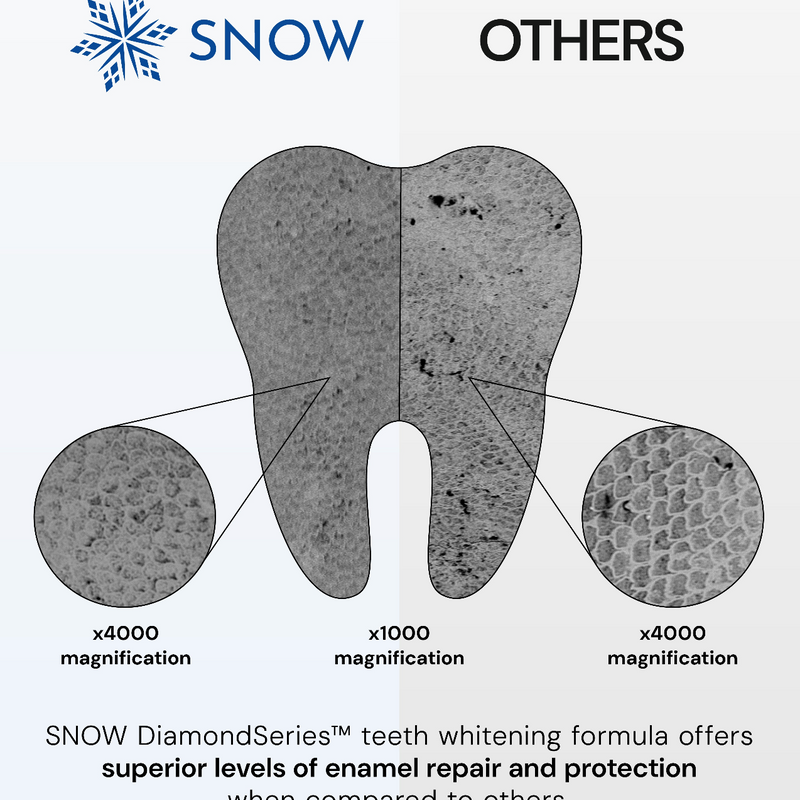Failing to care for your oral health can result in various issues ranging from unsightly to unpleasant to a medical emergency. Those tiny cavities that don't really seem like a concern can develop over time into serious tooth decay, a tooth infection, or even a dental abscess.
Dental abscesses often send a clear message through pain and other symptoms that require your immediate attention. But some people may still ignore an abscess until it evolves from an uncomfortable oral health problem to a severe medical issue.
To avoid such emergencies, you must understand how to prevent and identify tooth abscesses and what to do if you develop one.
What Is a Dental Abscess?
A dental abscess arises when pus develops near the tooth root or in the gum tissue due to a bacterial infection. There are various reasons why the infection may occur, such as severe tooth decay, gum disease, traumatic dental injury, or complications from a previous dental procedure.
A dental abscess and the infection that caused it can be treated relatively easily by your dentist. But these problems require your immediate attention to avoid complications and possibly even a life-threatening medical emergency.
The Different Types of Dental Abscesses
There are three main dental abscesses: a periodontal abscess, a gingival abscess, and a tooth abscess. Each is defined by the area in which the infection occurs. Some of the defining features of these conditions include:
Tooth Abscess
A tooth abscess, also known as a periapical abscess, is the most common dental abscess. These abscesses occur when tooth enamel becomes damaged or decayed, and bacteria are allowed to penetrate into the tooth pulp, eventually reaching the tip of the tooth root.
Periodontal Abscess
A gum abscess, also known as a periodontal abscess, is a pocket of pus between the teeth and gums. This most often results from poor oral hygiene and periodontal disease. The infection can affect the gums, the periodontal ligament, and the bone.
Gingival Abscess
A gingival abscess is an abscess that occurs in the gum tissue. Unlike a periodontal or periapical abscess, this type of abscess does not involve the bone or the teeth whatsoever. They most often occur when food becomes lodged in the gum area.
The Stages of a Tooth Abscess
Fortunately, a problem usually starts with warning signs and doesn’t become an emergency immediately. Various tooth abscess stages can signal you likely have an abscess in need of treatment:
Stage 1: Enamel Decay
The first step toward a tooth abscess is a simple cavity. When enamel decay occurs, it is the beginning of what can eventually open the door for a bacterial infection to find its way to your tooth root. This is the easiest one to treat all the tooth abscess stages.
Stage 2: Dentin Decay
Once the tooth decay has spread enough to reach the softer inner dentin, you may notice more symptoms, such as increased tooth sensitivity and tooth pain. Dentin decay is still fairly simple to treat, but time is of the essence because your odds of infection are now steadily increasing.
Stage 3: Pulp Decay
When the decay has reached down to the dental pulp, your oral health is now in a more critical situation. Infection of the soft inner pulp containing nerve tissue will lead to more painful symptoms and require more significant treatment to save the tooth. It is also only a matter of time before a tooth abscess occurs if this decay is left untreated.
Stage 4: Abscess Formation
An abscess is not present until the fourth stage. The abscess begins when the bacteria from the pulpal decay reaches the tooth root, which can only be identified through X-ray imaging and clinical exam. If the infection goes untreated, abscess formation will eventually occur.
Root canal treatment can address an infection that has spread to the tooth root, but further measures will often be necessary once the tooth abscess forms.
Stage 5: Health Complications
When you reach the final tooth abscess stage, you risk more general health complications, some of which are severe and even life-threatening.
Facial swelling is common at this point, as is fever and severe pain in the affected area. Unfortunately, sepsis can also occur, and the infection can spread into other parts of the body, including the brain, in rare cases.
It's best to identify and address the issue before you reach this last tooth abscess stage, but should you find yourself at this stage, the problem is still highly treatable, provided you seek immediate medical attention.
Gum Abscess Stages
The stages of a periodontal tooth abscess are often similar to those of a periapical abscess, except that a periodontal tooth abscess begins with gingivitis symptoms rather than tooth decay. Those symptoms include swollen gums that bleed easily and sore gum tissue.
These symptoms occur long before a periodontal abscess, but you should not ignore them. Gingivitis may be curable, while periodontal disease is a permanent infection and can only be treated.
Tooth Abscess Symptoms
While pus in the area of the affected tooth will be a clear indicator that your tooth has abscessed, there are several other symptoms you should keep an eye out for if you want to avoid serious complications, including:
- A small but visible pimple in the affected area
- Severe tooth pain
- Increased tooth sensitivity
- Painful biting or chewing
- Tooth discoloration
- Loose teeth
- Throbbing pain in the jaw, neck, or ear
- Swelling in the neck, cheek, or face
- Difficulty breathing or swallowing
- Bad breath that will not go away
- Swollen lymph nodes
Should the dental abscess rupture, it will likely be immediately evident to you as it will result in a rush of fluid into your mouth that smells and tastes foul, along with near-instant pain relief.
However, even if an abscessed tooth ruptures, it may not necessarily heal, and you'll still need to see your dentist for treatment.
Dental Abscess Treatment Options
There are a few different ways to treat a tooth abscess, depending on the stage of infection and the type of abscess. Your dentist can determine which method would be best for you.
Drain the Abscess
If the dental abscess has not yet ruptured, your dentist will need to drain the fluid from it to provide further treatment. This is done by making a small incision in the abscess area. After it has been drained, your dentist will clean and disinfect the area.
Root Canal Therapy
Root canal treatment may be necessary when a bacterial tooth infection causes the abscess. A root canal requires your dentist to access the inside of your abscessed tooth in order to clear out the tooth pulp infection and drain the abscess.
After the infection and abscess have been removed, your dentist will apply an antibacterial ointment that must sit in the tooth for a few days before the tooth can be filled with a biocompatible material and then resealed. Sometimes the affected tooth is provided with a dental crown for extra support.
Tooth Extraction
Although your dentist will do everything they can to save the abscessed tooth, sometimes the damage or the tooth infection is too severe, and extraction is the best option.
Tooth loss may not be ideal for you, but there are replacement options, and preventing serious complications is crucial.
Removing the Foreign Object
Gum abscesses are caused by an object becoming lodged in your gums, which means that the first step to treating this kind of abscess is to remove that object. After removing the object, your dentist will use a saline solution to clean the affected area.
Oral Antibiotics
Patients with weakened immune systems need to be extra careful about tooth infections, so they may be prescribed oral antibiotics to help fight them. If the infection has spread beyond the gum or tooth root, you may also need antibiotics to treat it.
Easing Tooth Abscess Pain
You should seek treatment for your tooth abscess as soon as you recognize an issue, but you may be coping with severe pain for a while before you can see your doctor. To ease that pain, you can:
- Take pain relievers such as ibuprofen, aspirin, or parcetamol
- Switch to a soft toothbrush
- Avoid consuming sugar
- Avoid exposing your teeth to hot or cold temperatures
- Eat soft foods only
Periodontal or periapical abscesses can be extremely painful, so these tips may not always substantially relieve your pain. If your pain is significant enough that you can't wait for dental care, go to the emergency room.
How to Prevent a Tooth Infection
To avoid dental infections and tooth abscesses, there are a few simple measures that you can take:
Brush Twice a Day
Brushing your teeth regularly is the simplest way to keep bacteria out of your mouth and avoid an oral infection.
Make sure to choose a toothbrush approved by the American Dental Association and use fluoride toothpaste. You will want to brush twice daily for at least two minutes.
Floss Once a Day
Flossing is often overlooked, but it's crucial to avoid periodontal disease, one of the most common causes of gingival dental abscesses, and other oral health issues, such as tooth loss.
Make sure to floss thoroughly once a day, and you'll be far less likely to develop infections of any kind.
Reduce Your Sugar Intake
Sugar feeds the bacteria in your mouth that produce plaque and tartar, which can be responsible for various oral health issues that can result in an abscessed tooth. You don't need to eliminate it entirely — just be conscious of how much you're consuming.
Visit Your Dentist Regularly
Your oral hygiene routine must work in tandem with regular dental visits, or even the most thorough and consistent brusher and flosser might end up with a dental infection. Schedule an appointment once every six months.
Address Oral Health Issues Quickly
Don't ignore the warning signs. Treating a cavity or gingivitis is much easier and less uncomfortable than treating a tooth abscess, so it's best to be proactive and address those issues swiftly.
FAQ
Some of the most commonly asked questions regarding abscessed teeth and gums include:
How Serious Is a Tooth Abscess?
An oral abscess can become incredibly serious when left untreated. If you have an untreated tooth abscess, see your dentist as soon as possible.
How Long Does It Take for a Dental Abscess to Spread?
It can take months or even years for a severe abscess to develop from a cavity, and then a few days to months to spread. However, an abscessed tooth can also spread within hours, so don’t ignore any symptoms.
What Can I Do to Treat a Tooth Abscess?
You can't treat a tooth abscess on your own, but you can take over-the-counter pain relievers and eat soft foods to ease the discomfort until you receive care.
How Do I Know If the Abscess Is Spreading?
One of the most apparent signs of a spreading abscess is swelling in the face or neck. Difficulty breathing and swallowing are also clear indicators, along with an unexplained fever.
The Final Word on Dental Abscesses: A Summary
Tooth abscesses are pockets of pus that are caused by bacterial infections in the tooth root or gum tissue. They can range in severity from serious tooth pain to fevers to swelling and can ultimately be life-threatening. Treatment includes draining the abscess, antibiotics, root canal therapy, and removing foreign objects from the mouth.
To prevent tooth abscesses, follow a thorough oral hygiene routine, avoid too much sugar, see your dentist regularly, and do not ignore any warning signs.
Make Your Teeth Sparkle with SNOW
SNOW offers whitening products that can brighten your teeth and improve your self-confidence. Visit us online today to learn more.


























